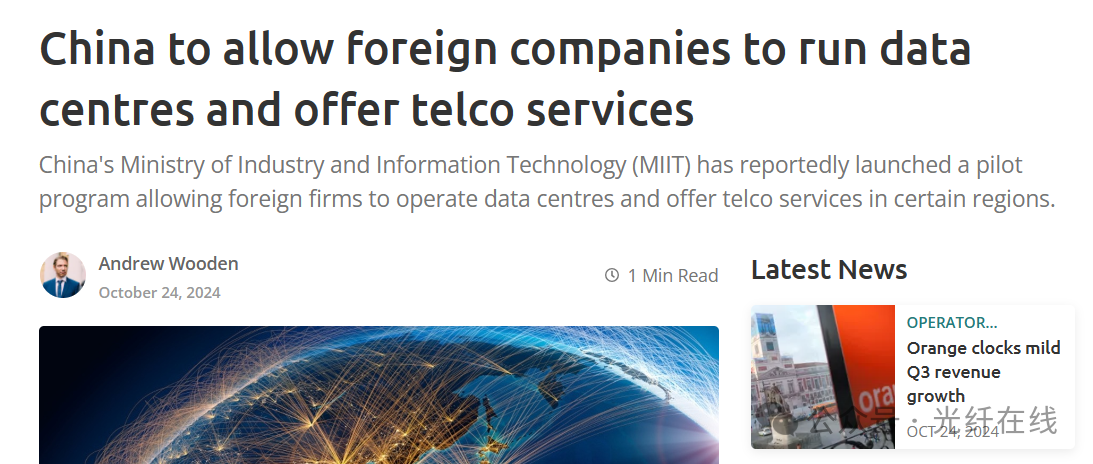A New Round of Telecom Liberalization - China Expands Pilot Value-Added Telecom Businesses 2024-10-28 Carol
On October 23, the Ministry of Industry and Information Technology organized and convened the value-added telecommunication business to expand the opening up of the pilot symposium, the official launch of Beijing, Shanghai, Hainan, Shenzhen, four value-added telecommunication business to expand the opening up of the pilot work. After the implementation of the pilot, foreign-funded enterprises can operate wholly-owned Internet data centers (IDC), online data processing and transaction processing and other telecommunications businesses in the pilot areas, deep participation in China's arithmetic, cloud services and other markets, and promote the development of China's digital industry. The Xinhua report also said that HSBC Bank China, Tesla Inc. are expected to be the first batch of foreign companies to participate in the pilot. And as of September 2024, the number of foreign companies previously authorized to operate telecom business in China increased to 2,220 companies.

Xinhua News Agency's commentary that four regions - Beijing, Shanghai, Hainan and Shenzhen - are officially launching pilot projects to expand the opening up of value-added telecom businesses to the outside world, marking a new stage in the opening up of China's telecom industry to the outside world. How to view this round of telecommunications business opening up? From the national level, this is to expand the degree of opening up, breaking down barriers to foreign investment, improve the business environment for foreign investors and other major initiatives in the telecommunications industry implementation. This year's “Government Work Report” clearly puts forward, to continue to reduce the negative list of foreign investment access, the complete abolition of foreign investment access restrictions in the field of manufacturing, and to liberalize market access in telecommunications, medical and other services. From the enterprise level, if the world's first-class data centers and telecommunications service providers can land in mainland China, it should be favorable for the upstream and downstream of the domestic communications industry. Just yesterday, NVIDIA CEO Jen-Hsun Huang announced at the India AI Summit that he had expanded cooperation with a number of Indian companies and launched Nemotron-4-Mini-Hindi-4B, a lightweight AI macromodel in Hindi with 4 billion parameters, for the local market. Jen-Hsun Huang said that by the end of this year, NVIDIA's computing power in India will grow nearly 20 times compared to a year ago, and the company will continue to invest in building computing infrastructure in the Indian market. In addition to India, NVIDIA not long ago announced that it had landed a data center in Thailand. If world-class data centers and telecom infrastructure are bypassing China, then it shouldn't be a good thing. The topic of telecom openness has been on the radar since Fiber Optics Online was first created. At that time, China had just joined the WTO, and telecom liberalization was on the list. Editors at the time also hoped that foreign operators could enter the local access market, but more than 20 years later, the progress of China's telecom industry development seems to lag far behind the promise of the year. Openness means opportunity, and openness means competition. China's telecom industry is already one of the world's most advanced, but it has lost some of its vitality and momentum, so if this round of liberalization can stimulate more innovation and market opportunities, it will be a great thing.